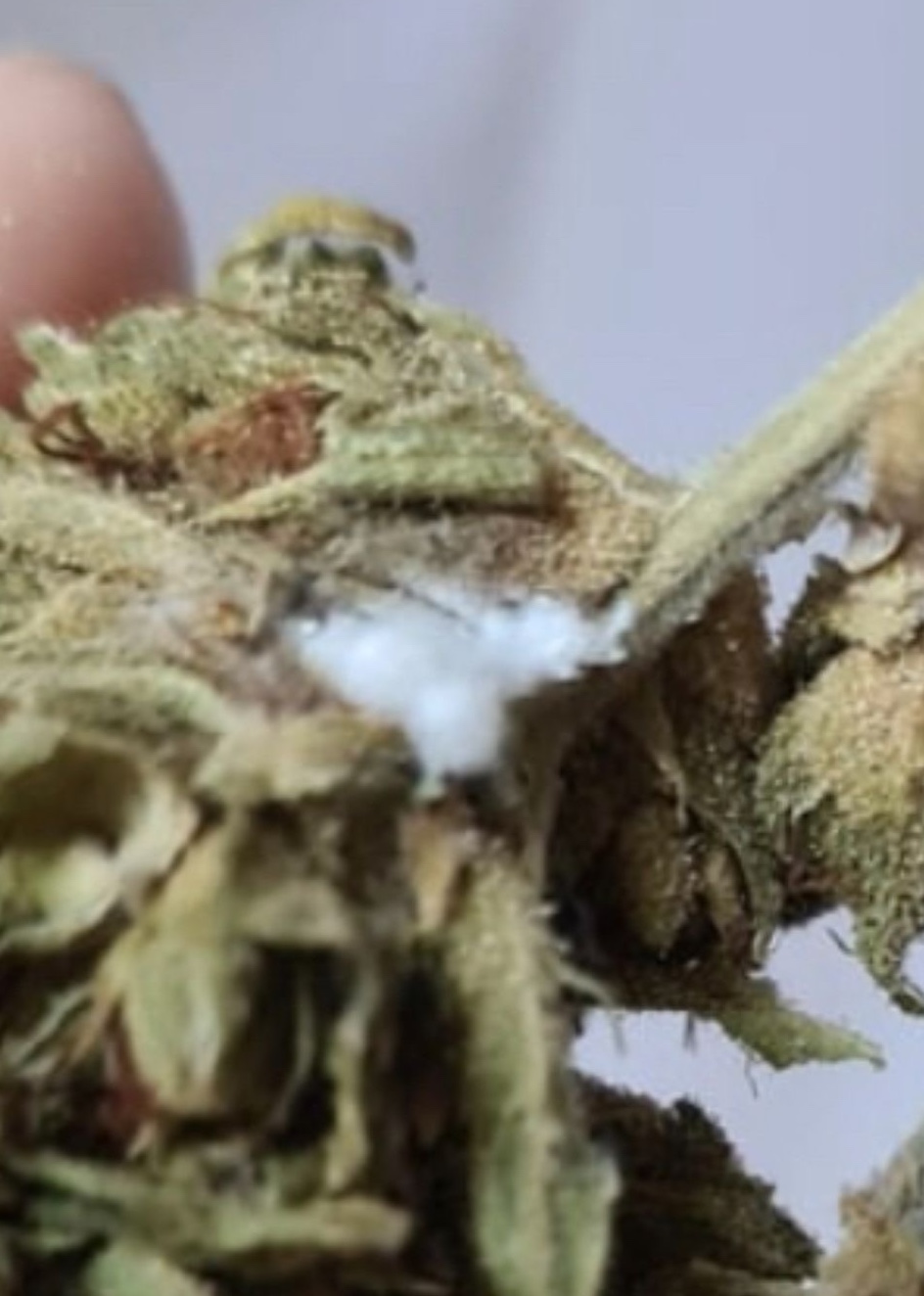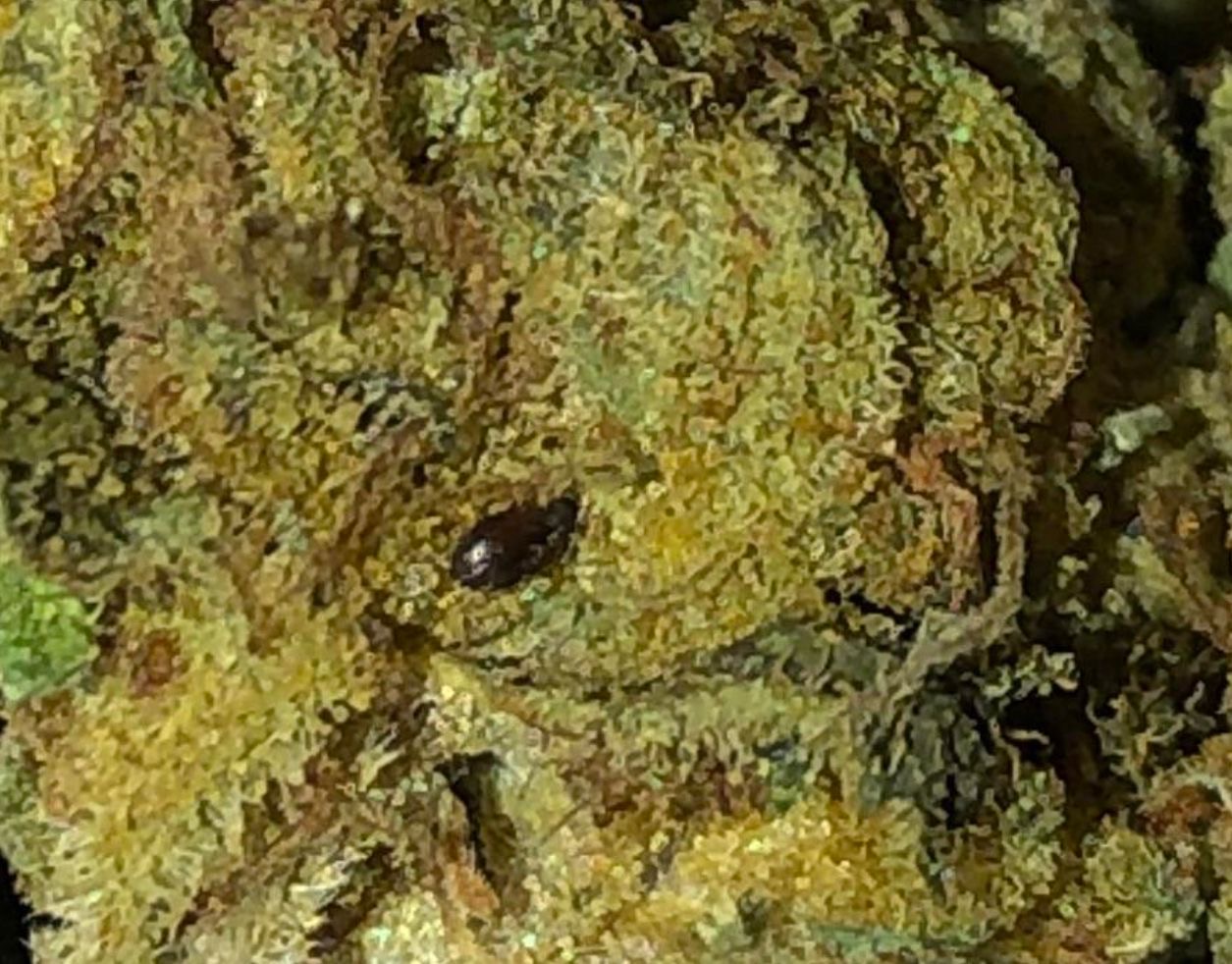Patients Are Finding Big Problems with Their Medical Weed
April 11, 2024“I couldn’t breathe properly. I felt a sharp pain every time I inhaled,” says Stacy, a medicinal cannabis patient in England, whose name has been changed for privacy reasons. She had no choice but to go to A&E, where she was diagnosed with a bacterial lung infection.
Stacy believes her recently prescribed medicinal cannabis – a strain called Hellfire – had been contaminated with mould. “I didn’t sleep for a week,” she tells VICE. “I slowly started feeling better, but I still don’t feel the same as I was before. I now have to use a sleep apnea machine, as well as salbutamol and steroid inhalers.”
Cannabis is one of the oldest forms of medicine, dating back to ancient times. And since the UK legalised the plant for medicinal use in 2018 it has been used to treat the conditions of over 30,000 UK patients. While it’s by no means a miracle cure, the plant has improved the quality of life for people in need, particularly those who aren’t able to take other forms of medication.
But Stacy’s experience is not isolated. Numerous people have come forward to tell VICE that their medicinal cannabis appeared to be contaminated with mouldy weed flowers, seeds and even bugs. “It's only a matter of time before someone is seriously hurt or dies,” says Stacy.
Her view is echoed by Ben, who is also speaking anonymously for privacy reasons. Ben is a member of the Medical Cannabis Patients Association (MCPA), and has experienced similar issues with his medication. “I flagged the strain up with my pharmacy, who told me that there was nothing wrong with it. It didn’t look or smell right, but I trusted them,” he tells VICE. Within two days of taking the medication he started to experience a “bad cough”, which later developed into hot flushes which would last “an hour or two” and “felt as bad as a fever”.
Ben went to hospital where, like Stacy, he was diagnosed with a “high white blood cell count” that was later found to be caused by both a chest and sinus infection. “I never get ill with these types of things. I thought it was COVID-19 at first, but I did a test and it was negative. It wasn’t a cold – it was an infection. I was bleeding out of my nose, coughing up weird-coloured shit. I’ve never touched the strain since and haven’t had any issues, but my immune system hasn’t been the same since.”
Dr Lawrence Cunningham, a recently retired GP and contributor for UK Care Guide, has experience treating patients prescribed medicinal cannabis. He underscores a genuine concern regarding the risk of developing lung infections from contaminated cannabis. "The presence of seeds, bugs and mould in cannabis flowers is not uncommon, and I can confirm that the risk of developing lung infections from contaminated cannabis is real,” he tells VICE.

“Mould spores, when inhaled, can infect the lungs, particularly in individuals with weakened immune systems or pre-existing lung conditions,” he says. While acknowledging the difficulty of verifying such claims without direct observation, he emphasises that it's "certainly plausible" that this strain could have caused a lung infection and that it “aligns with known risks associated with mould exposure”.
When patients have raised complaints to their pharmacy or clinic, they’ve been met with a laborious process that often ends with denial. Stacy complained about her mouldy cannabis under the MHRA’s yellow card scheme – which is used to flag medicine issues – but was left to wait approximately 18 months for the results, which eventually came back negative for mould.
“It was tested by a lab that has connections with the pharmacy – they had ties to the product. If that’s not a conflict of interest, I don’t know what is,” she argues. The Hellfire strain has now been discontinued. “But they won’t say it’s because of mould,” says Stacy.
Ben says he has experienced similar delays when he’s raised complaints, and has been taking note of yellow card responses made by members of the MCPA. He voiced frustration about the lack of independent testing and that, even when test results are sent back to the patient, much of the information is censored. He alleges that the clinics he’s dealt with use retention samples – in other words, a small amount of weed from a large batch – to test the product.
“They hand pick this sample, send it off for testing, and then once they have the results back they can declare it passes for the whole batch, even though they only tested a small sample of it,” he says.
When questioned on this issue, Dr Alison Cave, MHRA Chief Safety Officer, told VICE: “Yellow Card reports of suspected adverse reactions are evaluated cumulatively, alongside other information and evidence. We act, whenever necessary, to ensure that medicines are used in a way that minimises risk, while maximising patient benefit. We keep the safety of all medical products under continuous review.” Cave also noted that based on the “small number of reports” the MHRA has received on the Hellfire strain, the MHRA were “not currently actively investigating any safety issues” related to it.
However, this doesn't change the fact that many individuals who opt to get their products tested are required to give a portion of their medication away, leaving them out of pocket and having to ration their meds. This is a particularly poignant issue considering that many patients are on income support due to their medical conditions. Alex, also speaking anonymously, claims to have received mouldy medication. After complaining, she was made to wait six weeks for a replacement, leading to her having to ration out what was left.
Within that time, Alex says the pharmacy “didn’t want to deal with me – they were very dismissive. They eventually gave me a replacement, but it felt like a last resort. They told me the flower didn’t have mould and I had to take their word on that.”
Mould is not the only report coming from patients. There have been cases of individuals claiming to have received cannabis riddled with black beetle-like bugs, seeds, and even glue – an issue both Ben and Stacy have expressed concern over.

“They expect people with arthritis to sit there and pick every seed out of the bud to be able to use their medication; medication that they’ve paid through the teeth for as well,” says Ben. There’s promise that this problem will be rectified when the upcoming European Pharmacopoeia guidelines are released in July. Although, Stacy says, “it's outrageous that it’s taken six years for that to happen”.
So, what’s going wrong? “On paper, the UK has some of the strictest, if not the strictest, regulations in terms of mould and the cultivating process of cannabis,” James Smith, CEO of the medicinal cannabis manufacturing company Whole Plants, tells VICE. “However, some companies are using something the industry calls ‘greenwashing’ to get around these rules.”
In a nutshell, medicinal weed in the UK must be grown in a GACP (Good Agricultural and Collection Practices) environment and dried in an EU-GPM (EU Good Manufacturing Process) environment. “The biggest challenge occurs from when the cannabis is harvested to when it's cured – that's when things can go wrong,” Smith explains. “To cut costs, some companies grow cannabis in a GACP environment in one country, such as Canada or South Africa, and then partially dry it before shipping it ‘wet’ across the ocean – with moisture levels between 14 to 15 per cent – to Portugal for processing in an EU-GMP environment.”
Smith says this is unethical and unsafe. “In that process, mould is bound to happen,” he claims. He believes that the problem of greenwashing is led by get-rich-quick CEOs who want to cut corners, make their money and get out of the market. “The UK has these strict regulations, but when will they enforce them? They should be looking at the whole process, particularly where the plants are grown and where they’re processed. The Home Office should have the resources to do this but, because of austerity, the public sector has been denied resources to act efficiently.”
Medical cannabis is a new and rapidly developing industry that has already helped thousands across the UK, but it’s important to spotlight the bad actors within the industry who are putting their patients at risk. Patients face unprecedented stigma for the way they treat their conditions, from police to co-workers, the general public to the media, and even healthcare professionals. It begs the question: How much more uproar would there be if patients on more traditional forms of medication, like diazepam or sertraline, found mould or bugs in their meds?
"It’s [already] a fight to get to the stage where you’re prescribed medicinal cannabis in the UK,” says Alex. “People don’t want to lose their medication. It’s a new industry, and it feels like anything we say that’s negative about it means it might be taken away from us.” Until the UK government holds those cutting corners in the production of safe medicine to account, this problem will continue to go unaddressed.
